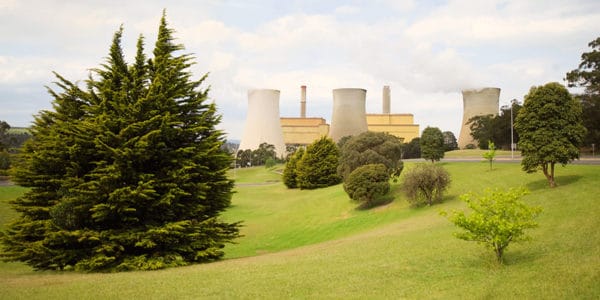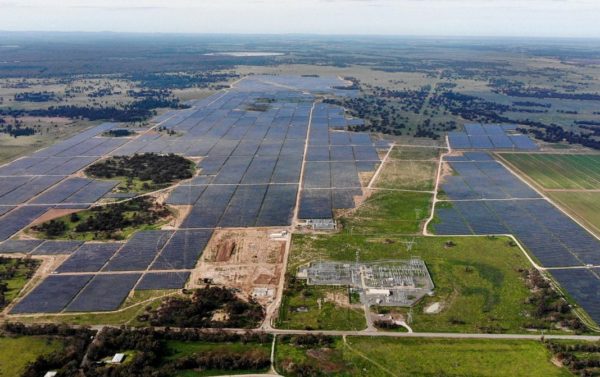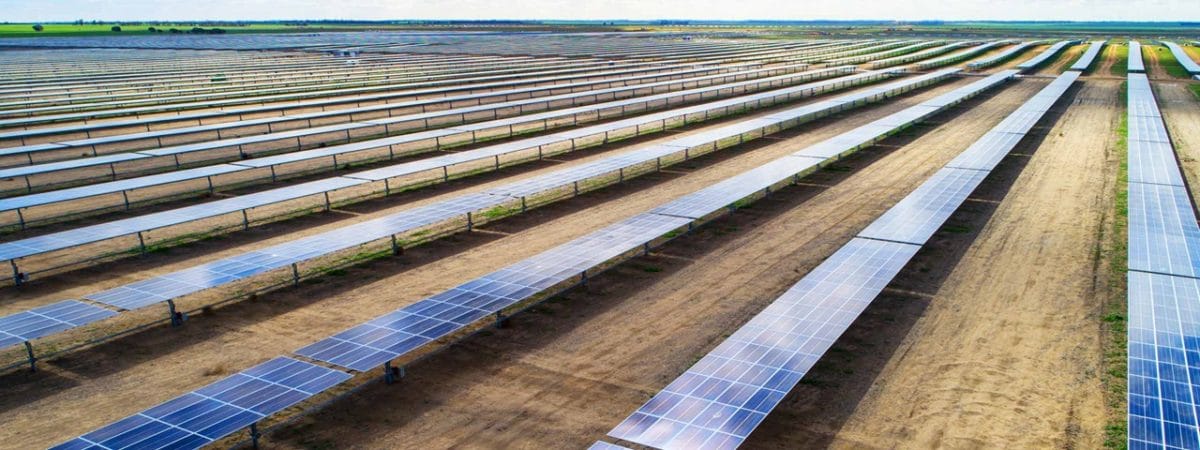The construction and commissioning of utility scale solar PV projects in Australia has slowed in recent years, giving rise to concerns that market and infrastructure constraints will hobble the nation’s transition to renewable energy but Edify Energy founder and chief executive, John Cole, is upbeat about the future.
Concerns about network capacity, rising capital expenditure costs and declining wholesale prices have been blamed for a reduction in the amount of large-scale PV entering the Australian transmission network but Cole has rejected any talk of doom and gloom, pointing to increasing opportunities as the sector continues to mature.
“I’m not a big fan of the doom and gloom,” he said on Thursday during the Clean Energy Council’s (CEC) Large-scale Solar Forum. “I think there are still lots of opportunity in the market.”
Cole highlighted EnergyAustralia’s announcement earlier this week that it would be closing the coal-fired Yallourn power station four years early as a glaring opportunity for the renewable energy sector.
Originally slated to close in 2032, the power station will now be retired by mid-2028. Yallourn currently supplies about 20% of Victoria’s electricity demand or 8% of the National Electricity Market (NEM).
“That’s 1,500 MW and one of the assets that’s replacing it is a 350 MW four-hour battery but we know batteries don’t produce any energy, they are not a generating machine so that’s a large gulf of energy that needs to be replaced,” Cole said.
“And we know we’re going to see other conventional power plants come offline faster than expected. There still is a lot of opportunity here.”

Image: EnergyAustralia
David Dixon, senior renewables analyst with independent energy research company Rystad, confirmed the amount of new utility scale PV coming online has slowed in recent years and remains subdued in 2021.
After surging in 2017 with the development of 19 large-scale PV assets of more than 20 MW totalling an estimated 1 GW, a record 2 GW of utility scale PV entered the grid in 2018 but since then it has dropped back to about 1 GW per year and Dixon said the sector continues to face considerable challenges.
“2017 was when it all kicked off,” he said. “At the time, conditions for investments were quite favourable. We had high wholesale prices in the market, above $80 a MWh in all states, LGC (large-scale generation certificate) prices were quite high and Marginal Loss Factors (MLF) were high in rural parts of the grid where you would want to connect utility PV assets.
“It was really in the second half of 2018 we saw these issues come to the forefront in regards to construction and connection.
“And that really flowed through into 2019 when all of a sudden we went from 2 GW to just 1 GW and the number of assets also halved. MLF essentially went through the floor for utility PV assets and we started to see constraints really start to bite.”
Widespread bushfires and the effects of the Covid-19 pandemic added to the concerns of investors and developers in 2020, sparking the exit of some key players from the Australian market and delivering a dramatic slowdown in construction and a reduction in the number of financial commitments.
Despite the hurdles, an estimated 1 GW of utility scale PV was developed in Australia in 2020 and the handing out of a string of power purchase agreements (PPAs) by government entities provided renewed security for the sector but Dixon said challenges remain.
“We moved into 2021 thinking perhaps this is going to be another record year of construction in the industry,” he said.
“There is certainly a lot in the pipeline in power purchase agreements to break ground but there is obviously a lot of headwind still in the market.”
Dixon said shipping rates had “gone through the roof”, triggering a “dramatic” rise in capital expenditure, commodity prices have gone up and the diminishing amount of network capacity to connect into “is universal across the grid”.
While there is no denying there has been a reduction in the number of financial commitments and network connections have dropped off since the start of 2019, Cole is not alone in his confidence for the sector.

Image: Edify Energy
Sam Reynolds, managing director of the Australian arm of renewable energy investment firm Octopus, which entered the Australian market with the 333 MW Darlington Point solar farm, believes the reduction in new large-scale PV is simply a market reset and a second wave is coming.
“What Australia had in the last two to three years is a massive lump of renewable energy generation coming on the longest grid in the world … and there’s no country in the world that could handle that,” he said. “It was the slowdown that kind of needed to happen.”
Reynolds said the industry had learnt a lot in recent years and with the Australian Energy Market Operator’s (AEMO) Integrated System Plan (ISP) calling for more than 26 GW of new large-scale solar and wind projects by 2040, it will be better for it moving forward.
“Only the best quality projects will get up which is good for the system,” he said.
“The best quality projects will get access to power purchase agreements which again is good.
“I think for us there is going to be a second run. Our plans are quite ambitious in Australian for the future.”
This content is protected by copyright and may not be reused. If you want to cooperate with us and would like to reuse some of our content, please contact: editors@pv-magazine.com.









By submitting this form you agree to pv magazine using your data for the purposes of publishing your comment.
Your personal data will only be disclosed or otherwise transmitted to third parties for the purposes of spam filtering or if this is necessary for technical maintenance of the website. Any other transfer to third parties will not take place unless this is justified on the basis of applicable data protection regulations or if pv magazine is legally obliged to do so.
You may revoke this consent at any time with effect for the future, in which case your personal data will be deleted immediately. Otherwise, your data will be deleted if pv magazine has processed your request or the purpose of data storage is fulfilled.
Further information on data privacy can be found in our Data Protection Policy.